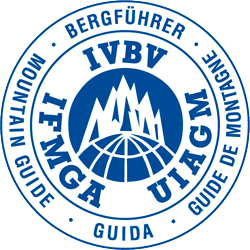Sandstone Towers in Ethiopia by Pat Littlejohn
Ethiopia is nothing like you imagine. Events like Band Aid and Live Aid have portrayed an image of famine and war which gets us to give generously but unfortunately kills any hope of a tourist industry.
It is a vast country, bigger than France and Spain combined, and mostly mountainous, with peaks as high as the Swiss Alps. With the exception of the Danakil Desert (the lowest place on earth at more than 100m below sea level) most of northern Ethiopia is high land, around 2500m, so the heat is not as oppressive as you might expect and the nights can be cool - for Africa.
Culturally and historically Ethiopia is fascinating. Known as the 'Cradle of Humanity' its human history stretches back 4.5 million years; the famous skeleton of 'Lucy' is displayed in the National Museum. As one of the oldest Christian cultures it has an amazing heritage of rock-carved churches reminiscent of Petra. The story of its ruling dynasties begins with the legendary liaison of King Solomon and the Queen of Sheba, their son Menelik being the ruler who brought the Ark of the Covenant to Ethiopia, where it has supposedly remained for the past 3000 years. Ethiopians are knowledgeable and proud of their culture, which remains strong partly because they are the only Africans never to have been colonised.
Could Ethiopia be a climbing destination? Tales of big walls in the Simien Mountains, and of endless rock in the sandstone region of Tigray, were enough to make Steve Sustad and I want to find out.
Tigray
The children in the area were lean, fit and agile. With a bit of gear and ten minutes training they would have been up after us - it was all we could do to stop them following us anyway. We were the mad farangi (foreigners) who had come to climb the towers they had scrambled around all their lives, and they ran to greet us everywhere we climbed, wanting to carry bags, show us the path, guard our sacks.
From a climbing point of view Tigray was like being pitched back into the early days of climbing desert towers in the States - a golden age if ever there was one. We explored a fairly limited area, climbing three big towers during an 8-day stay. Our style of climbing - start at the bottom with a rack of nuts and cams, and do your best. Adventure guaranteed.
Abune Yemata Guh
Site of one of the most remarkable rock-hewn churches in Tigray, carved into the base of a great castle of rock which is seemingly impregnable on every side. Beside it is a slender tower with an enticing crack line running down its north face - but not quite reaching the base. It's our first venture on to Tigray sandstone, the point where dreams meet reality.
We get to the base; Steve takes one look and announces that it's my lead - he's like that in the mornings. I manage about ten metres, thrash around for 20 minutes then give up, put off by the rock, the runners and the deceptive steepness. Plan B is to climb the right edge of the face for a pitch then traverse in to the crack. This keeps us busy for the next couple of hours but fails too, for all the same reasons. So it's on to plan C, following cracks and chimneys to gain the dreaded the South Face, the sunny side. We'd planned to climb as much as possible in the shade, fearing that to climb in full sun in Ethiopia would be unbearable, but Steve had a theory that the rock would be better on the South side, baked hard in the sun or something, so off he went into a chimney system heading in the right direction. My lead is a horrid off-width but above this it looks beautiful, a perfect hand crack leading to a promising weakness going all the way to the summit.
Steve makes short work of the crack, putting to use his misspent youth climbing the cracks of Squamish Chief, then I get another nice pitch to a point where the top looks within reach if it weren't for two intervening off-widths, both overhanging and rounded. I should say at this point that our rack was all wrong for climbing in Tigray. Our biggest cam was a Camelot 3 - a grave mistake we would pay for time and time again - which made any off-width look even more frightening than it usually would. Ah well, Americans are off-width experts, I thought as I snuggled into my overhang-protected stance and passed over the lead.
Steve went up for a bit, then to my surprise didn't go up any further, he went inwards. Muffled cries of 'You're gonna love this' followed by 'F…ing Hell!' played havoc with the imagination till after what seemed a long, long time it was my turn to follow. I climbed 10 metres then looked into the crag and saw daylight. A narrow slot, and I mean narrow, went straight through to the North Face. Skinny Steve had just about made it, but being more muscular around the midriff I had to exhale and wriggle like a snake before popping out into a position of stomach-churning exposure, 500ft off the ground with overhanging rock above and below us. Steve was tied to a cluster of dodgy belays out to the left, trying to look cheerful.
For the next two hours I tried everything but the obvious, traversing out left, then right, then back into the tower to squeeze through to the upper of the rounded off-widths. In the end there was nothing for it but to attack the overhang directly. With just one runner between me and Steve I had visions of stripping both of us off the face if I fell, but eventually I passed the first bulge, only to be confronted by another. With time and energy exhausted we abseiled off and walked back as the sun set.
After a day to recover we were back, and with Steve belayed more securely in the middle of the tower I had the confidence to push on up the final crack and get us to our first virgin summit in Tigray.
Sheba Tower
Queen of the towers discovered so far, a 500ft monolith of beautifully sculpted sandstone in the Nevelet group of towers, just 15 minutes drive along the track from Abune Yemata. The fissures in the north side looked smooth and scary so again we chose the south, a more featured chimney leading to a massive bulge which looked like it might be a bit of a problem.
Four pitches of enjoyable and very atmospheric climbing led to a great chamber in the heart of the tower. The only way onwards was an unprotected section of wide bridging. It was either commit to it or give up, and I hesitated for a long time before I was mentally ready to go for it. Now we were on a huge jammed block at the level of the bulge, and Steve's lead. He went upwards and outwards in a bottomless slot that cut through the giant overhang. When I asked how it was he replied 'F…ing mind-blowing!' so I decided to keep quiet. There were scrapings, there were expletives, but the rope inched out steadily and eventually the shout of 'Safe!' echoed down to me.
On following I discovered he had done 60ft of unprotected squeeze chimney in an incredibly exposed position, truly the Sustad Slot. 'Your mates lead', as they say. From here a relatively normal pitch featuring a 5c bulge at the end led to the summit, a fantastic spot with the whole of Tigray province spread below us and some very interesting-looking rock peaks shimmering in the distance.
Ethiopia was a bit of a revelation. The poorest country I've been to but rich in so many ways, including its climbing potential. We'll be returning - once you've felt the lure of unclimbed desert spires, like Chuck Pratt and Leyton Kor in the sixties, you're hungry for more.
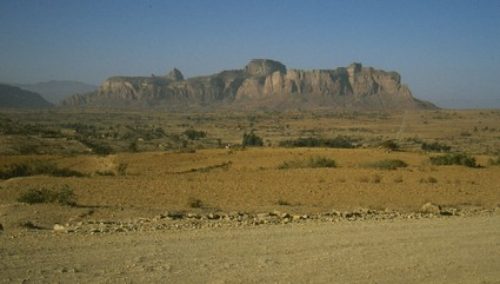
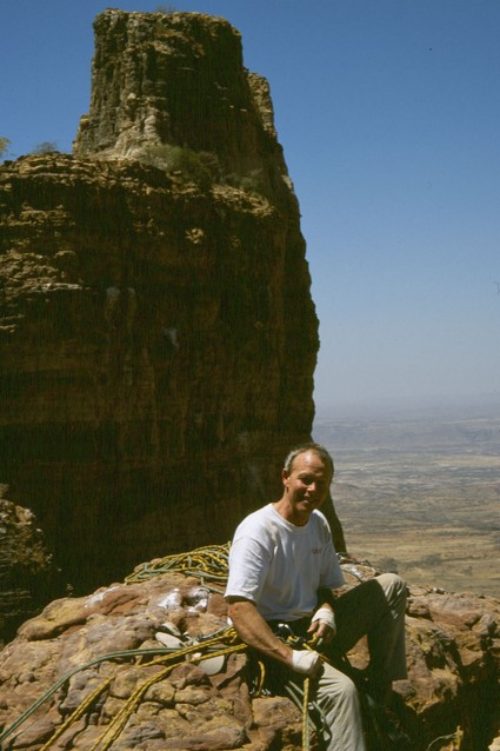
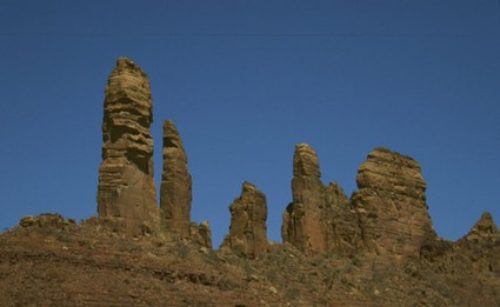
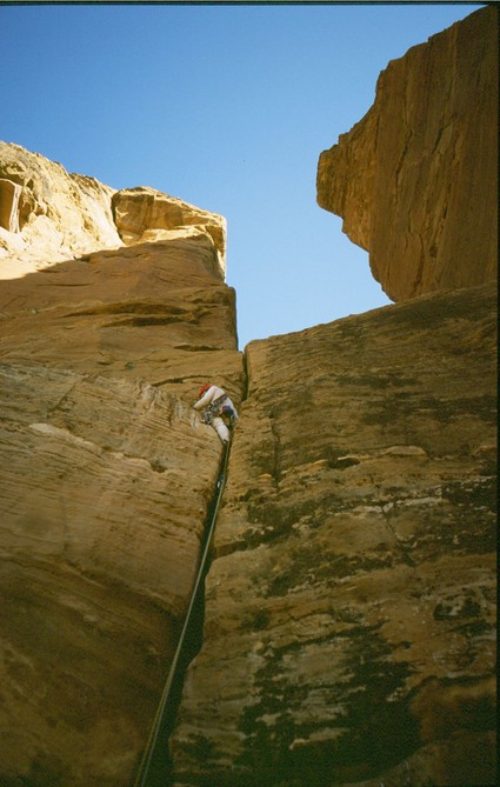
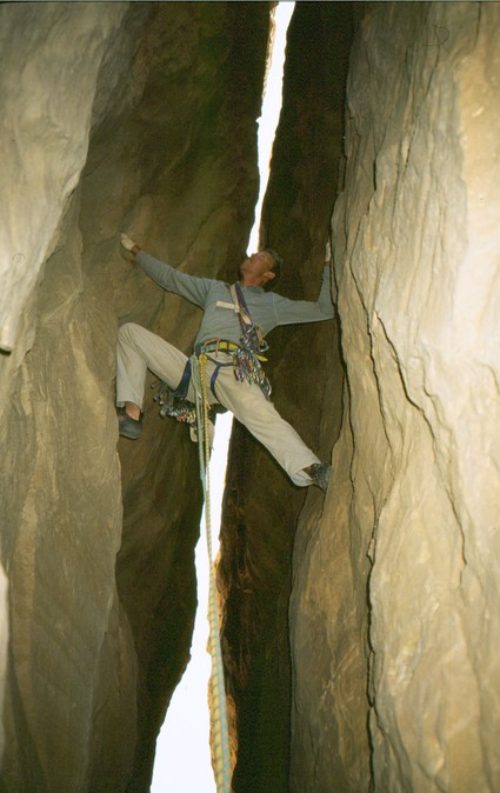
Related News Articles

ISM Virgin Peaks Expedition 2024 - Tien Shan Kyrgyzstan
ISM trip report of our trip into a very remote part of the Tien Shan Mountains, Kyrgyzstan
Read Article
Getting Into & Developing Your Climbing
Indoor bouldering is a great place to start if you want to try climbing for the first time. You can…
Read Article
ISM Virgin Peaks Expedition 2023 – Tien Shan Kyrgyzstan
ISM trip report of our trip into a very remote part of the Tien Shan Mountains, Kyrgyzstan.
Read Article
Kyrgyzstan Faces 2022
This year ISM celebrated 25yrs of expedition climbing in Kyrgyzstan, with a fantastic trip to the Fergana Range in the…
Read Article
